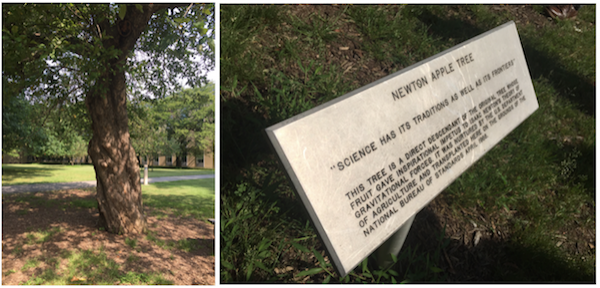Saturday, July 15, 2017
By:
Sam and I brought the cohort to Goddard this Wednesday. We chose the tour date to coincide with the Science Jamboree, an annual showcase of the research conducted in Goddard’s various departments.

One of the perks of interning at NASA is that it's allowed me to explore a broad range of subfields within astrophysics. My research to date has been limited to two topic areas: particle astrophysics (specifically, neutrino astrophysics) and solar physics. But plenty of other things interest me, too. The Jamboree brought them all to one room.
Long before I ever considered a career in astronomy, I was intrigued by the idea of potentially habitable worlds orbiting stars other than the Sun. I’m old enough to remember the first exoplanet discoveries in the 1990s; since then, new technologies — notably NASA’s Kepler spacecraft — have unveiled thousands of additional candidates. And then there’s dark matter: the invisible “stuff” that comprises over a quarter of the universe (and whose nature remains one of physics’ greatest mysteries). The Wide Field Infrared Survey Telescope (WFIRST) mission, currently in development at Goddard, is designed to investigate both. I spent a good portion of my morning at the Jamboree talking to the scientists at the WFIRST table.
In the afternoon, Sam’s mentor led us on a walking tour of the campus. By the time I got on the bus to go home, I’d logged over 7 miles.

Aside from the occasional seminar, I spend most of my time in the heliophysics building, which means there’s a lot I myself haven’t seen. For me, the highlight of the tour was viewing the cleanroom that previously housed the James Webb Space Telescope. Partially assembled at Goddard, the telescope — set to launch late next year — is now at NASA’s Johnson Space Center in Houston for testing. You can learn more about it here.

Something I hear pretty often — and I’d imagine most astronomers can relate — is “Sure, space is neat, but what’s the point of studying it?” And that’s a fair question. While certain aspects of space physics have practical applications (space weather forecasting, for one), it’s hard to argue that the process of galaxy formation or the dynamics of binary star systems has any tangible effect on human well-being. To my SPS colleagues who raised this objection after the NASA tour, I submit that the creation of new knowledge — along with the satisfaction it brings the creator — is an end in itself. The laws that govern the cosmos are within my capacity to understand, and I think that alone makes astronomy worth pursuing.
But for those who prefer the more down-to-earth brand of physics, Thursday brought our scheduled visit to NIST (the National Institute of Standards and Technology), where Luis is working this summer. NIST is responsible for maintaining the standards of measurement used in countless industrial applications, and serves as a hub for research and development in areas ranging from communications technology to nanoscale imaging. Check it out:


The NIST campus is also home to a descendant of Newton’s famed apple tree:

I want to end this post by acknowledging a man named Brent Janus, who interned at Goddard through SPS back in 2002. Despite his limited mobility — a consequence of his muscular dystrophy, which confined him to a wheelchair throughout much of his life — he successfully completed his project (an analysis of the data from NASA’s Near Earth Asteroid Rendezvous), as well as a bachelor’s in physics the following year. He died in 2007.
Brent’s story was shared with me during this week's dinner with AIP executives at the American Center for Physics. Brent faced obstacles I can’t begin to imagine, but he didn't let his physical disability curtail his ambitions. If drive is what defines someone's life, then Brent lived more in his 26 years than most people do in three times that many. I wish I could have met him.

Kristine Romich
